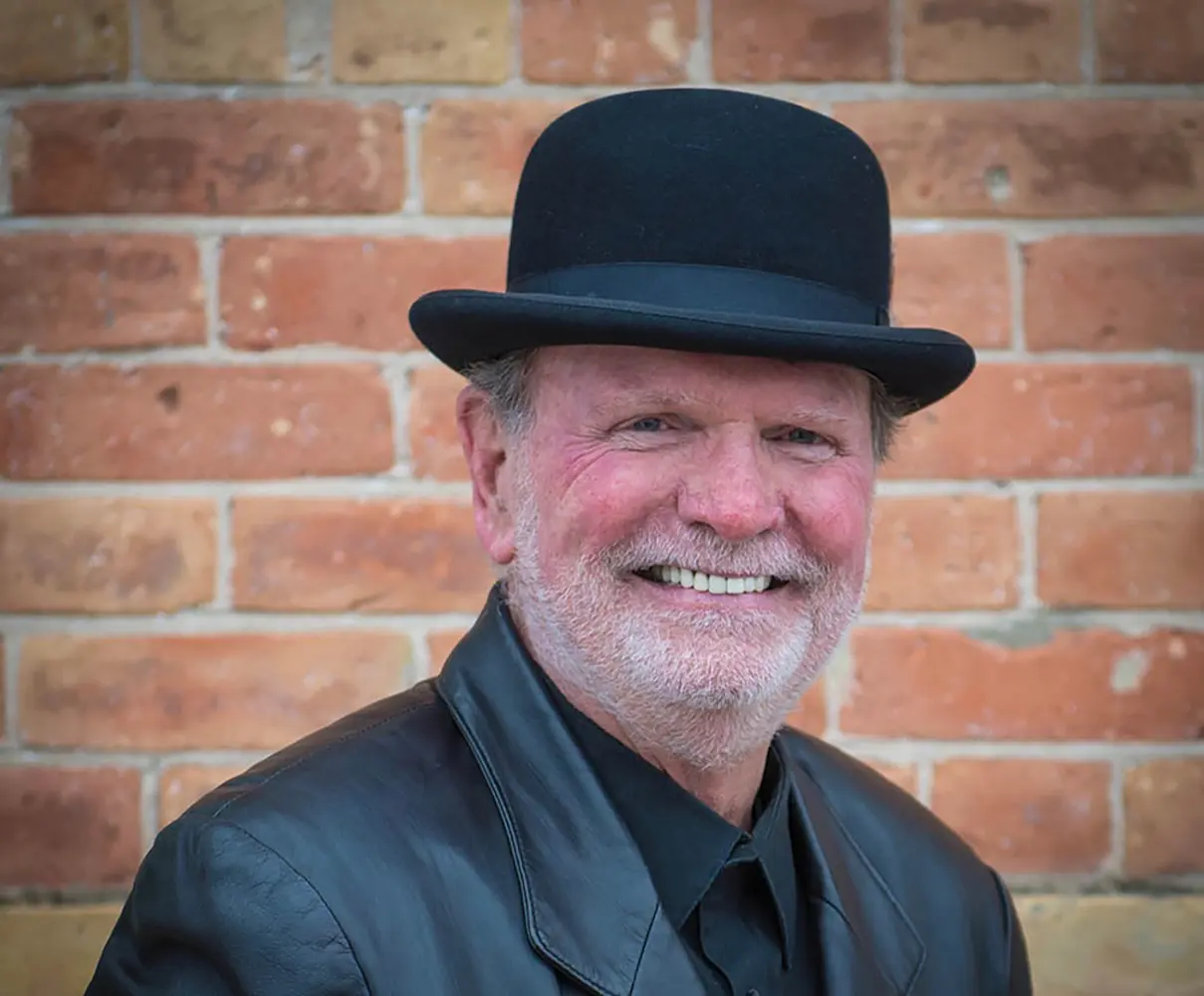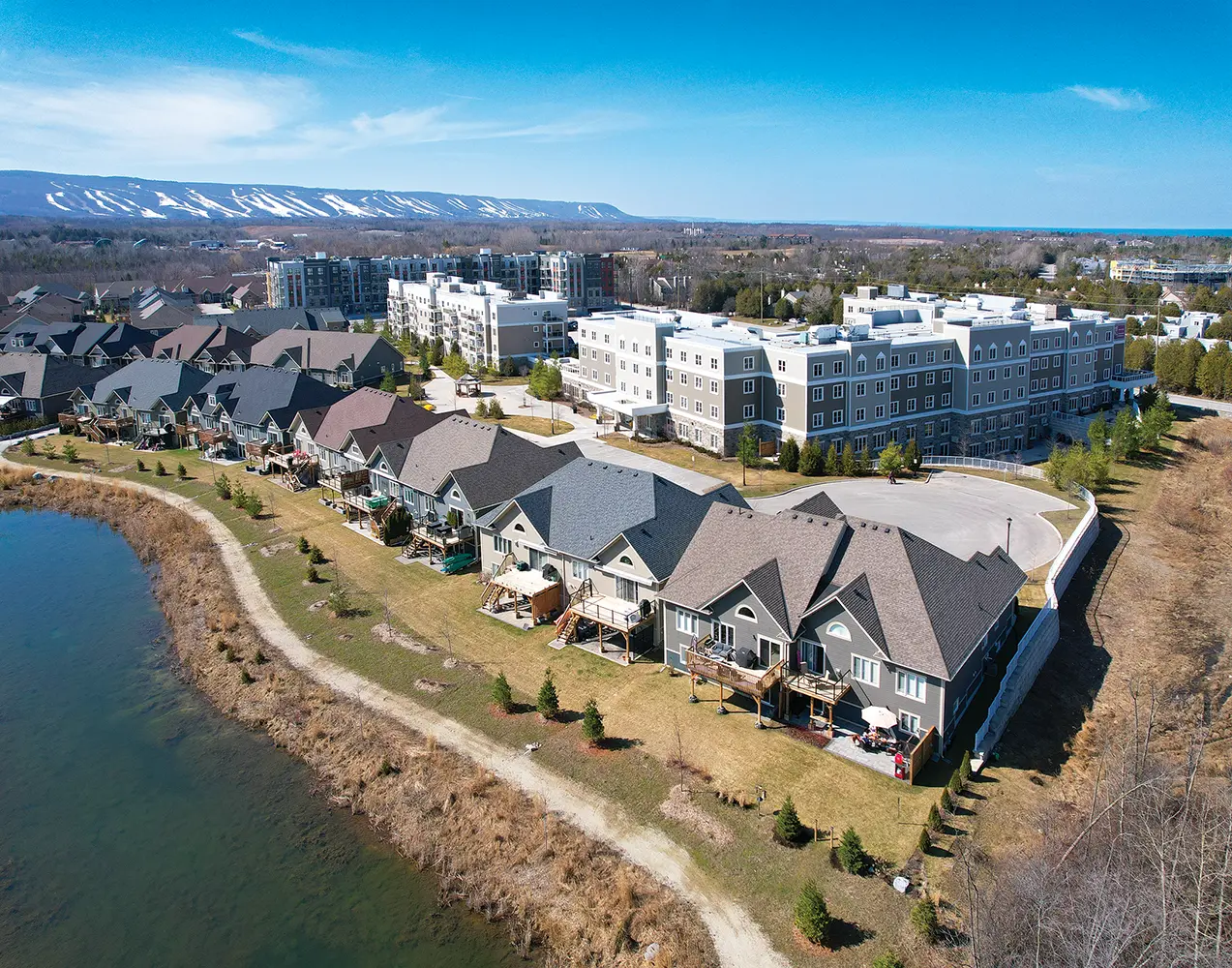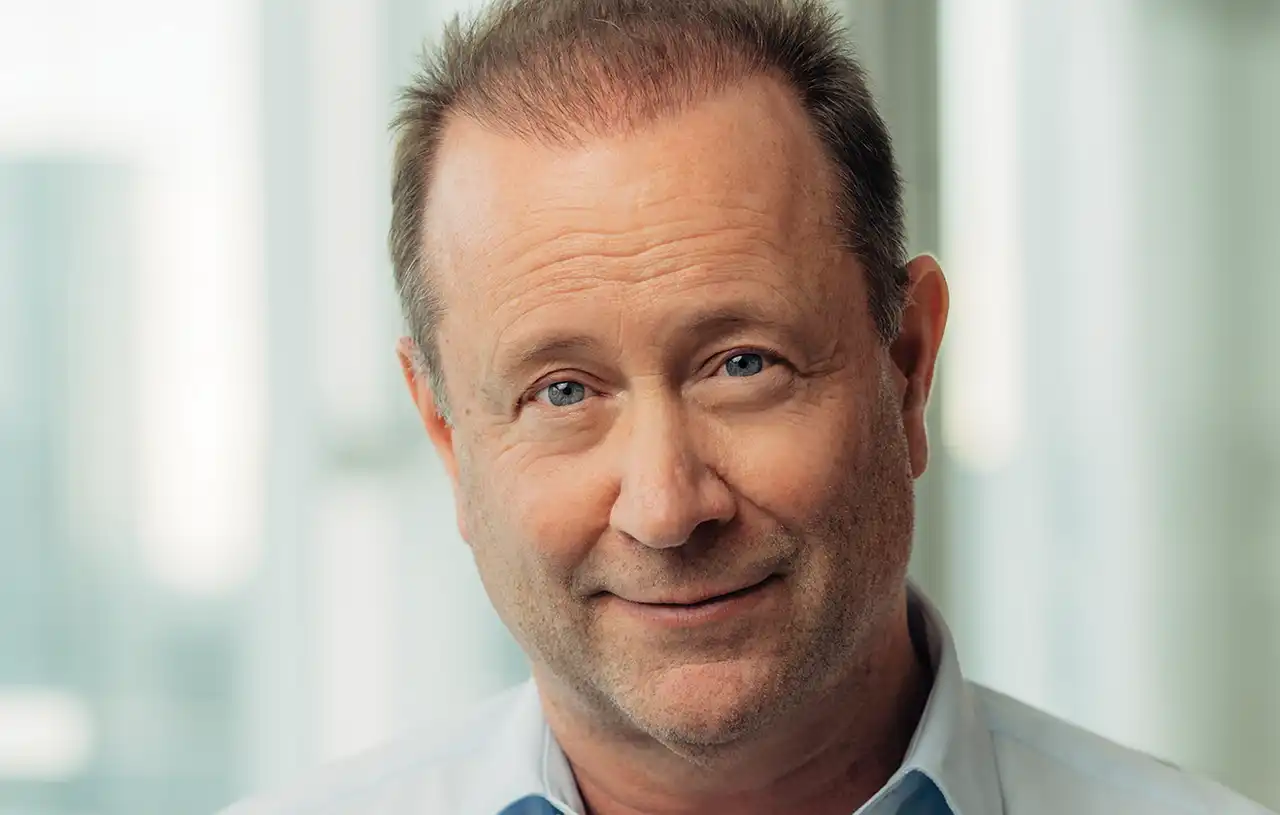On The Bay speaks with Collingwood developer—and hat aficionado —Thomas Vincent, the “grandfather of corporate housing,” about his international career and dedication to community.
by Roger Klein

Decades before the digital revolution brought the world Airbnb, Thomas Vincent was enjoying some success connecting North American travellers with privately owned accommodations in England. This first business venture set the trajectory for a long career in the travel and hospitality industry, first focusing on holiday destinations and then later on the needs of corporate travellers.
Vincent’s CV reveals a serial entrepreneur with a knack for identifying his customers’ needs. Ultimately, Vincent put his personal talents to work in corporate America before finally settling down with his family in Collingwood, where he’s best known for wearing stylish hats and developing Balmoral Village, an age-in-place and adult lifestyle community.
Roger Klein: Welcome to On The Bay, Thomas. You have a long history of bringing people and businesses together. How did you get started in the travel industry?
Thomas Vincent: I got started in the travel business in 1972 while on a one-year adventure trip throughout England and Europe. During my time in London I met a chap who had an idea of putting together a guest home organization. He was great at organizing and operating, but didn’t have any marketing or sales skills. I thought this would be a great concept for North Americans wanting to visit London. So we signed up over 300 guest homes in London and I came back to Canada to market the concept. We charged $5 per night and offered accommodations in British homes with a full English breakfast.
RK: How did you shift your focus from recreation and leisure accommodations to corporate travellers? Where did that lead?
TV: I started a company called VillaJamaica, then expanded to other countries, and within five years had an inventory of over 15,000 villas around the world. It was called World Wide Villa Vacations. I also set up a yacht charter marketing arm with over 100 crewed yachts in the Grenadines and Antigua.
In the final analysis, I was travelling all over the world but not making much money. A few of my villa clients asked me if I had any self-contained apartments in Toronto. I did a lot of research, wrote a business plan for financing, and created a company called Execupart Executive Apartments. We rented and leased apartments and condos, furnished them all in an executive style, including maid service and telephone, and payment by credit card. It was exciting times for sure and I decided to set up an international corporate apartment business and establish furnished corporate housing properties in every city across Canada and 40 cities worldwide. Some people call me the “grandfather of corporate housing.”
RK: Your early business ventures focused on connecting people with accommodations. When did you make the leap into developing your own properties?
TV: In 1985 I purchased a tract of land on [Toronto’s] Scollard Street and built the first highrise in Yorkville. This 15-storey building had 100 identical, beautiful furnished corporate apartments.
But the City of Toronto said I was running a hotel, when my average stay was 75 nights. The city took me to court…and I finally ran out of cash fighting the city and building a $20 million property. The recession hit at the same time, and interest rates went up to 18 percent—a nightmare. I eventually had to declare bankruptcy and lost the building. After my bankruptcy, I raised $100,000 from family and friends, got back into the corporate apartment business that I knew so well, signed some major leased developments and built my business back again.
Then, in 1998, I was contacted by a few corporate housing companies in the U.S. that wanted an international arm. We formed a company called Bridgestreet Accommodations. I moved to Ohio, where I became the president of the worldwide company. We were later bought out and ended up with a company called Interstate Hotel Group, which was a $3.5 billion company with 410 hotels, 38,000 employees.
I was asked to become the president of Bridgestreet Corporate Housing Worldwide and was also appointed as a senior vice-president of the hotel division. It was a fun ride for a small-time entrepreneur, but after nearly four years in the U.S., my family wanted to return to Canada.
“I designed Balmoral Village with five different types of housing, so someone living in the village could downsize when their needs changed.”
Thomas Vincent

RK: What originally attracted you to Southern Georgian Bay? When did you start working on developments here?
TV: I started skiing at Blue Mountain in the ‘80s, first renting on weekend sojourns, then our family bought our first vacation home in the ‘90s at Vista Blue in Collingwood. After selling my businesses we decided to buy a home at Mariner’s Haven, as we loved being on the water, close to skiing, and we could walk and bicycle into town. We made the transition to Collingwood full time by 2009.
RK: Catering to the needs of corporate travellers proved to be a recipe for success. Did you apply any of the same business strategies to other projects?
TV: Prior to moving to Collingwood, I found out that the Cranberry Golf Course’s driving range lands were for sale and purchased the land with two silent partners. I loved the location and studied the demographics in Collingwood and the surrounding region. My mom and dad needed more attention and medical care and I saw the opportunity in Collingwood for an age-in-place lifestyle community. I knew there had to be better retirement solutions than what existed at the time in Ontario.
I designed Balmoral Village with five different types of housing, so someone living in the village could downsize when their needs changed. I am now developing the last block at Balmoral which will have medical services included for the residents. Balmoral Village is virtually the only retirement village of its kind in Ontario.
RK: You’re currently involved in a number of community-focused initiatives. What are you working on right now?
TV: Everyone who has benefited from a successful business career has to consider reinvesting in their community or even on a broader scale. I know its sounds trite, but we all have a duty to make the world a better place in some small way.
Five years ago, I attended a seminar on housing needs in South Georgian Bay. At that time it was estimated that we were short some 2,500 staffing positions in the SGB area, primarily due to the cost of housing and lack of availability.
So, I formed a great development team consisting of engineers, planners, architects and consultants. We now have plans to offer various types of attainable/affordable housing ready to go, using modular housing manufacturers. We just need the municipalities to understand the urgent need and work with the private sector. We also need appropriate lands from both public or private sectors.
I’m also part of a group called CACE (Collingwood Art Culture Entertainment) who’ve been working to bring an arts, culture and entertainment centre to Collingwood to serve the entire region. We desperately need a centre to support arts and culture and have the ability to bring in professional entertainment, for residents now and in the future. The CACE Group would like to see around 800 seats. The bottom line is we love this community and we all have to contribute to keep and make this the best area to live in Ontario.
RK: How many hats do you have?
TV: You can’t tell my wife, but I have at least 65 dress hats in my collection. I can’t go into a hat store anymore as I have almost every style of dress hat available. I fell in love with the completed suit/hat look in my twenties and have never stopped wearing them. In fact, I put a hat logo on my business card so people could remember me better, and my X handle, which I don’t use often, is @canadianhatman.














